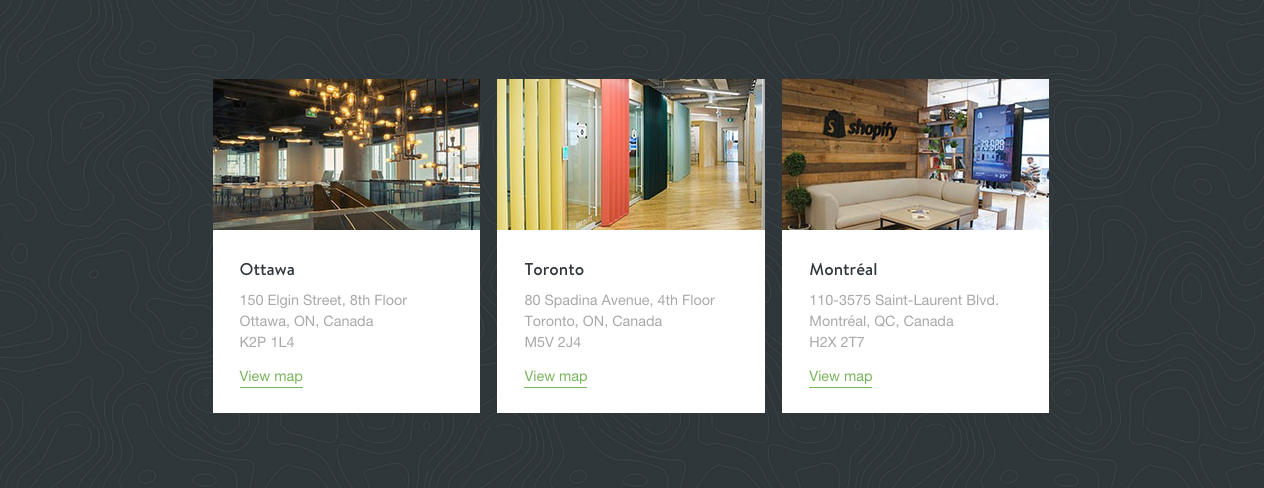
On average, it only takes someone a few seconds to determine whether they want to stay or leave your website—which can be the difference between a sale you’ve been waiting for, or the loss of a customer.
Part of that decision is made on whether or not they find your website to be trustworthy.
That’s why we wrote this post. We’ll cover the importance of having a trustworthy website, and things you can do to immediately instill a sense of trust in your business.
Why a Trustworthy Website Is Important
With the possibility of phishing scams, malware—or even just plain poor customer service, people are much more wary with their clicks than ever before.
And, because you’re running an online store where a transaction is taking place, you need to be hyper aware of how your business, and website are perceived.
Luckily, you don’t have to worry about the security of your checkout if you’re using a hosted solution—but what about the process of actually getting a customer to that point?
How can you get someone to trust the face of your website so that they continue to the point of purchasing?
What does it mean to a consumer for a business and website to be trustworthy?
A study by the team at UXMag looked into what consumers thought made a brand trustworthy. We'll apply some of these going forward.
A company is moral. Trust involves the belief that a company is law-abiding and fair while also showing that it cares about its customers.
A product will do what it claims to do. A consumer has expectations that the company’s product will live up to its claims, which are assumed to be accurate and unbiased. Most people trust that when they hit the “send” button, an email will be sent to the selected contact.
Information will be correct, complete, and unbiased. When people trust the information and choices presented, they are less likely to feel a need to go elsewhere.
A product or service has quality. People want to feel confident in their choices and we all want to feel confident that our digital devices are quality products that will safely hold important data.
"A company will protect me." Security and privacy are increasingly a key concern for consumers as they navigate the digital world. People want to know that a company has their best interests in mind. Will a company safely store my personal credit card information and keep sensitive information private?
A product will do what it claims to do. A consumer has expectations that the company’s product will live up to its claims, which are assumed to be accurate and unbiased. Most people trust that when they hit the “send” button, an email will be sent to the selected contact.
Information will be correct, complete, and unbiased. When people trust the information and choices presented, they are less likely to feel a need to go elsewhere.
A product or service has quality. People want to feel confident in their choices and we all want to feel confident that our digital devices are quality products that will safely hold important data.
"A company will protect me." Security and privacy are increasingly a key concern for consumers as they navigate the digital world. People want to know that a company has their best interests in mind. Will a company safely store my personal credit card information and keep sensitive information private?
With that in mind, let's get into some actionable methods of making your website more trustworthy.
You'll have no problem implementing these tactics today.
1. Having a Strong Design Makes a Huge Difference
Think of it like this: you’re walking down the street and are looking for a place to grab something to eat. Do you go into the restaurant with a cracked window, marquee signs with flickering lights, and with a strange odor coming out from under the door? Or, do you go into the restaurant that has beautiful type for their logo, bright lights, and open windows that welcomes people passing by?Probably the latter. So you should be applying the same principals to your online storefront—your website.
There’s no excuse for having a poorly designed website in this day and age. There are just so many resources available to get something setup that’s beautiful and functional—something that makes people want to learn more about your product, and eventually buy.
But what makes a website’s design trustworthy?
Take a look at these two websites for instance. Which one are you more likely to shop on?
Endy Sleep

Bath Magic Inc.

You would probably feel more comfortable giving your credit card information to Endy simply because of the design and simplicity of their website. There's a certain confidence that Endy perpetuates. It might just be that the hero image model genuinely looks happy compared to the angry woman on Bath Magic Inc.
I don’t mean to pick on Bath Magic Inc. though — as chances are there’s reason behind their design choices. And that's totally fine, but if you do decide to go this route, make sure it ties together well with your brand strategy.
With that in mind, here are some quick tips on how to design for trust:
- Avoid all caps paragraphs
- Try to avoid comic-sans font (unless it's a part of your overall strategy)
- Ensure your website doesn't have any poor grammar
- Don't use tacky stock images
- Keep the layout of your website simple
Note: If you have the capital available, it's definitely worth hiring someone who has a vast understanding of design to help with redesigning your storefront if you think it needs some work.
2. Add a Hint of Personality to Your Website
Isn’t it nice when you visit either a retail store, or an online store, and feel as though you’re in good hands?You might not have even spoken to anyone yet—but you know from a purely visual aspect that everything will be okay. You just know that the people behind the business really care about their brand, and even the products they carry.
Whether that be conveyed through the messaging on their website, storefront, or even something you read online—it’s clear that they’ve built a sense of trust with their customers. But how do they do it?
Let's take a look at the landing page for Tim Ferriss’ website. He has an incredibly loyal fanbase. He's been able to achieve that level of trust and loyalty through consistently providing exceptional content.
For someone who is unfamiliar with Tim, his website is absolutely perfect. I mean, he's literally putting his face on the frontpage of his website!

Not only is the design absolutely stunning, but it includes the following without having to dig for more information:
- A picture of Tim Ferriss so we know who he is
- Quotes from reputable brands
- Star ratings from Amazon
- A clear call to action
For an online store, a strong message on the frontpage of your website might be all it takes. Or, an about page with pictures of your employees and mission statement is a good idea too. Try to humanize your product pages as well by including pictures of real people using or interacting with your product.
In the past we’ve covered what makes a strong about page—but can you think of ways to go above and beyond, and take this to your homepage as well, much like Tim does?
3. Make Sure Your Website Is Up-To-Date
Beyond just having consistent uptime, fast load speeds, as well as a custom domain—there’s a few other things you can do to ensure the overall health of your website.Be sure that all of the information on your website in regards to shipping, contact information, product information and more is all up to date. Take some time to go through product descriptions, as well as old blog posts to ensure that there isn't any outdated information that may be misleading to a potential customer.
A good way to subtly display that you're on-top of things is to have some sort of press page, or press mentions displayed directly on your storefront.
For instance, here's what Freshly Picked includes on their storefront after being featured on Shark Tank and Ellen:

4. Use Secure Badges to Display That Your Website Is Safe

Now more than ever, online shoppers are hyper aware of their privacy and security. With that in mind, it’s important to be able to prominently display that a visitor on your website is browsing securely.
If your ecommerce solution doesn’t automatically display a notice to customers upon checkout that they are using a secure server as Shopify does, you’ll want to be sure you let your customers know your website is secure by displaying your SSL certificate symbol or a notice informing them of the fact.
There are a few ways to do this as well—whether it be trust badges in the footer of your store, or even a sidebar note that mentions that you’re secure through a third-party provider—anything helps.
Bonus: Try adding McAfee SECURE to your online store as a quick way to add a trust element.
5. Show That You're Active Online
One thing that I frequently do, is check a store’s social presence to see how active they are with their community.If they haven’t commented, shared, or liked anything online in the past while—how can I be sure that they’re still an active store? What if they’re just taking orders and forgetting about shipping them out?
It’s important to show that you’re engaging with your audience. Whether that be by responding to tweets on Twitter, or sharing product shots on Instagram—it eases a buyer’s mind.
Alternatively, having an online blog for your store is a fantastic way to keep your visitors and customers up to date with what’s going on with your business.
Here's what Bobo Academy includes in the footer of their store:

Not only do they include a Twitter and Instagram feed, but they also have cute caricatures of themselves to add even more personality to their business. It simply feels like a genuine company because they are so transparent with their activity in the community.
You can use a few different services to add your Twitter or Instagram feed to your actual storefront. Otherwise, if you’d like, you can also simply link off to your social accounts using social buttons.
6. Make It Easy for Anyone to Contact You
There’s nothing more frustrating than trying to contact a business and not being able to. If you’re a trusting business, then why make it difficult for your visitors and customers to contact you?By setting up a simple contact form on your website, you’re doing yourself wonders. Even better is if you are an established business and have the ability to provide your visitors with an address they can reach you at.
Here's an example of what that might look like if you have multiple locations:

It's also good to include a phone number for visitors to reach you at. Customers expect that they should be able to reach you whenever they please—whether its through live chat, social media or phone—being responsive is absolutely critical in building trust in your business and website.
Make it easy for customers to actually speak to someone from your company, and their trust will grow.
Bonus: Try using a service like Grasshopper to setup a business phone line.
Conclusion
Now that we've taken a look at some of the ways you can instill trust in your website, it's up to you to start implementing some of these tips.To view the original article please visit: http://www.shopify.com/blog/32997060-6-ways-you-can-make-your-website-more-trustworthy












